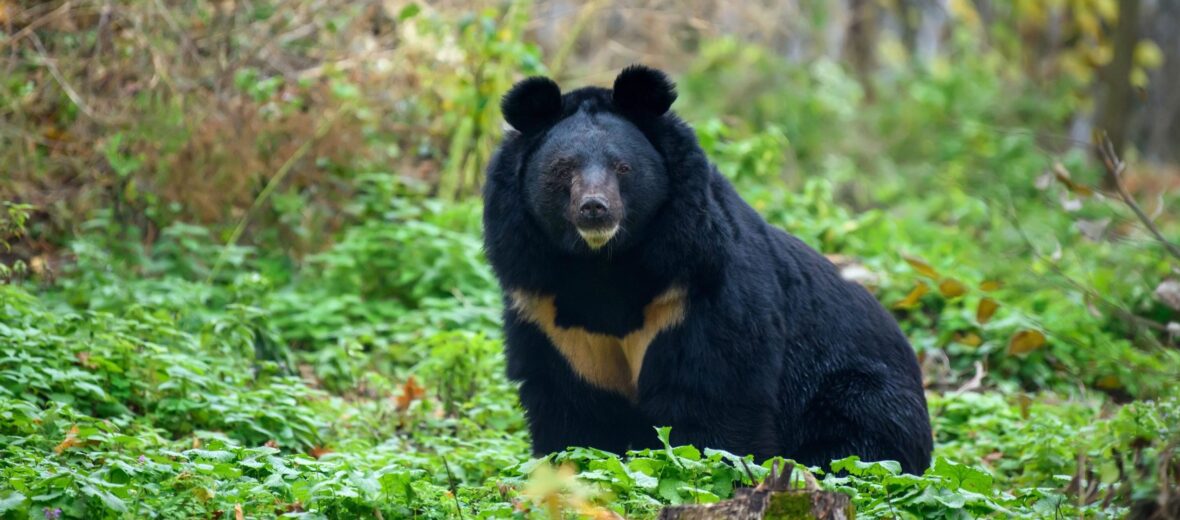
The Asiatic black bear, aka Asian Black Bear, moon bear, Himalayan Black Bear, and the Tibetan Black Bear, is a medium sized bear that hails from western, central, eastern, and southern Asia. They prefer low altitude subtropical, tropical, deciduous, and temperate forests. These bears are 1 of 8 known true bear species in the world. Over the last 30 years their population has been reduced by nearly 50% due to deforestation and illegal hunting for body parts used in traditional Asian medicine. These bears are listed as Vulnerable by the IUCN.
First the Stats…
Scientific name: Ursus thibetanus
Weight: Up to 440 lbs.
Length: Up to 6.25 feet, plus up to a 4 inch tail
Height: Up to 5.4 feet
Lifespan: Up to 25 years
Now on to the Facts!
1.) Asiatic black bears are nocturnal (active at night).
2.) They are a solitary species that only congregate to mate and fight for territory.
3.) Most black bears hibernate but some stay active throughout the year.
4.) Asiatic bears tend to only attack when injured, threatened, or when protecting their young.
5.) Like many bears, they are skilled climbers and swimmers. In fact, they spend a great deal of their lives in trees.
But wait, there’s more on the Asiatic black bear!
6.) They are omnivores, consuming berries, fruit, nuts, seeds, honey, various grasses, invertebrates, fish, birds, rodents, other small mammals, and even carrion.
7.) Their primary predators are wolves, tigers, and brown bears, that prey on the cubs. Adults typically only have humans to fear.
Did you know…?
These bears can walk on both 2 and 4 legs. They are able to walk up to 1/4 of a mile on 2 legs!
8.) After a gestation (pregnancy) of between 6 – 8 months, 1 – 4 cubs are born between March – April.
9.) They are polygynandrous (2 or more males mate with 2 or more females).
10.) Cubs leave their mothers at around 2 – 3 years old.
Now a Short Asiatic Black Bear Video!
Also, check out the Critter Science YouTube channel. Videos added frequently!
Want to suggest a critter for me to write about? Let me know here.



